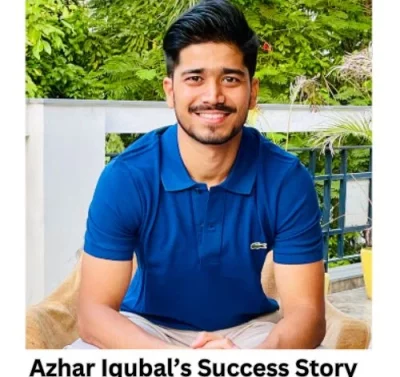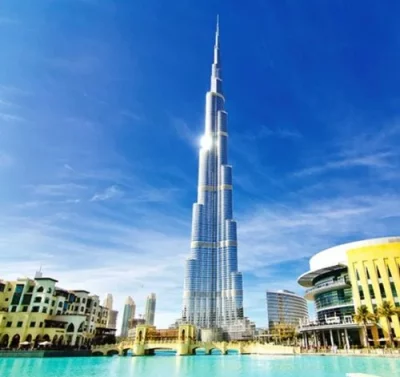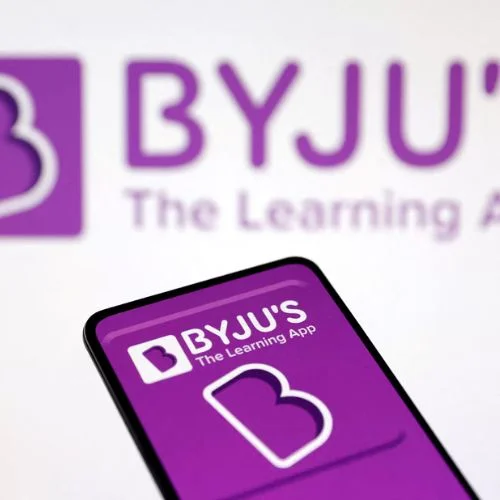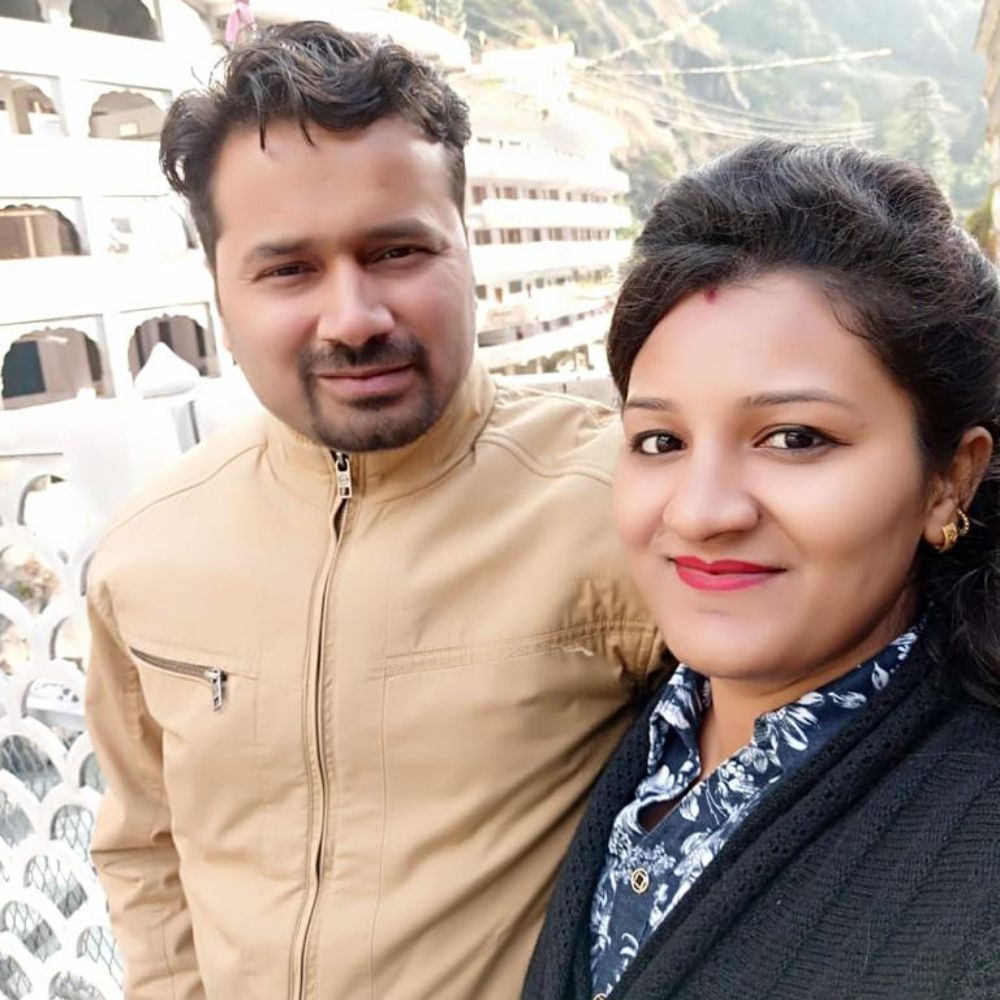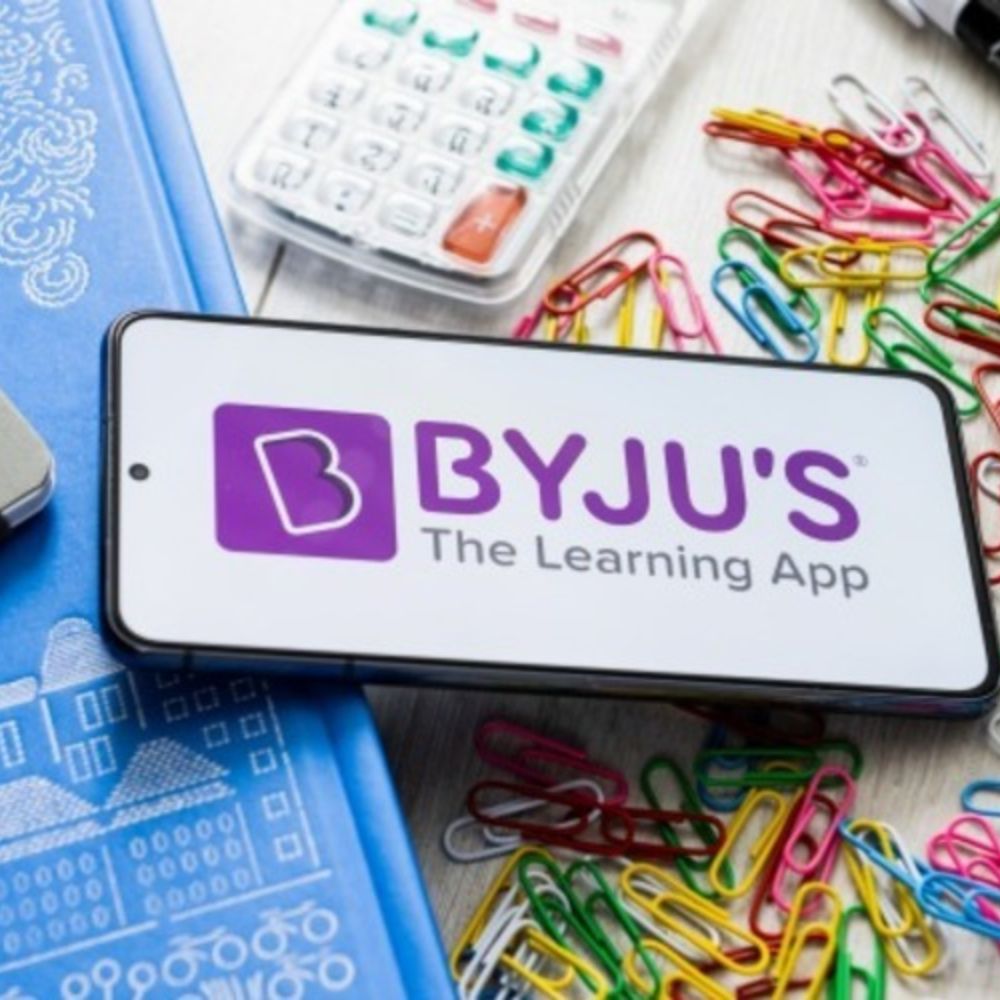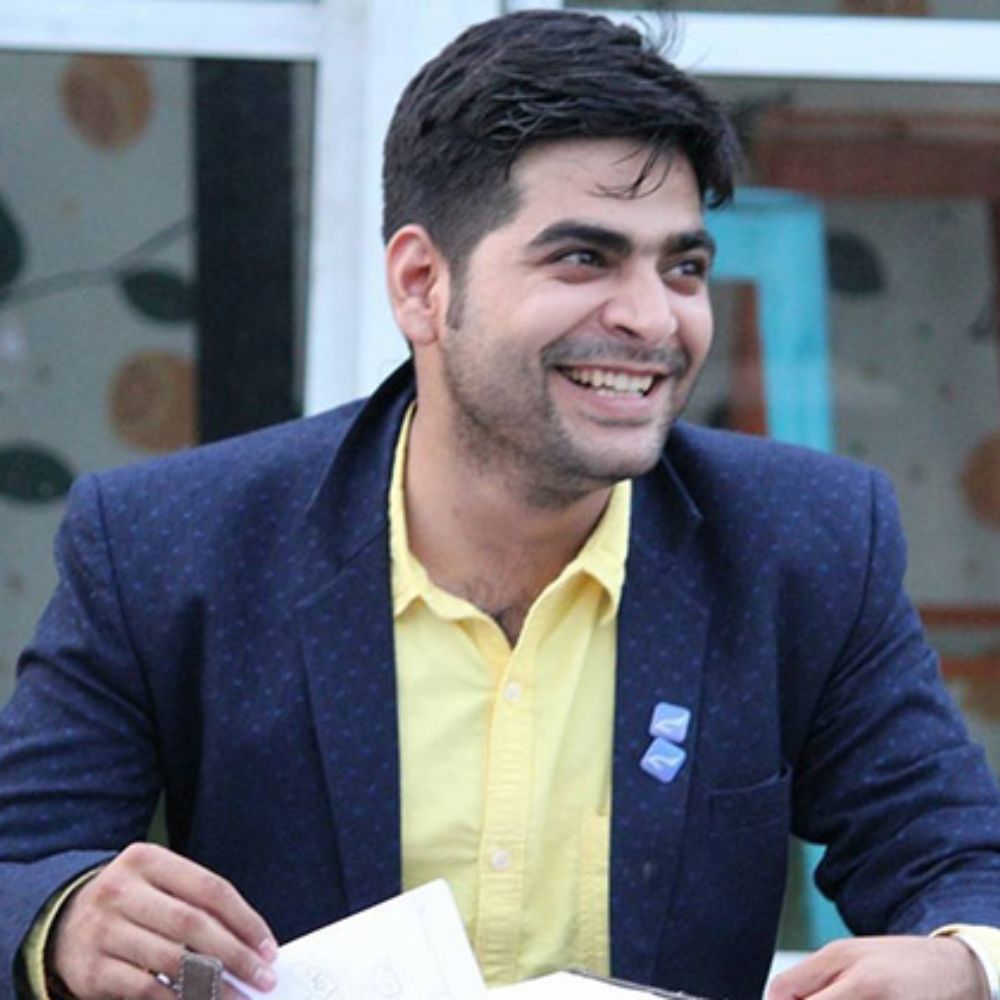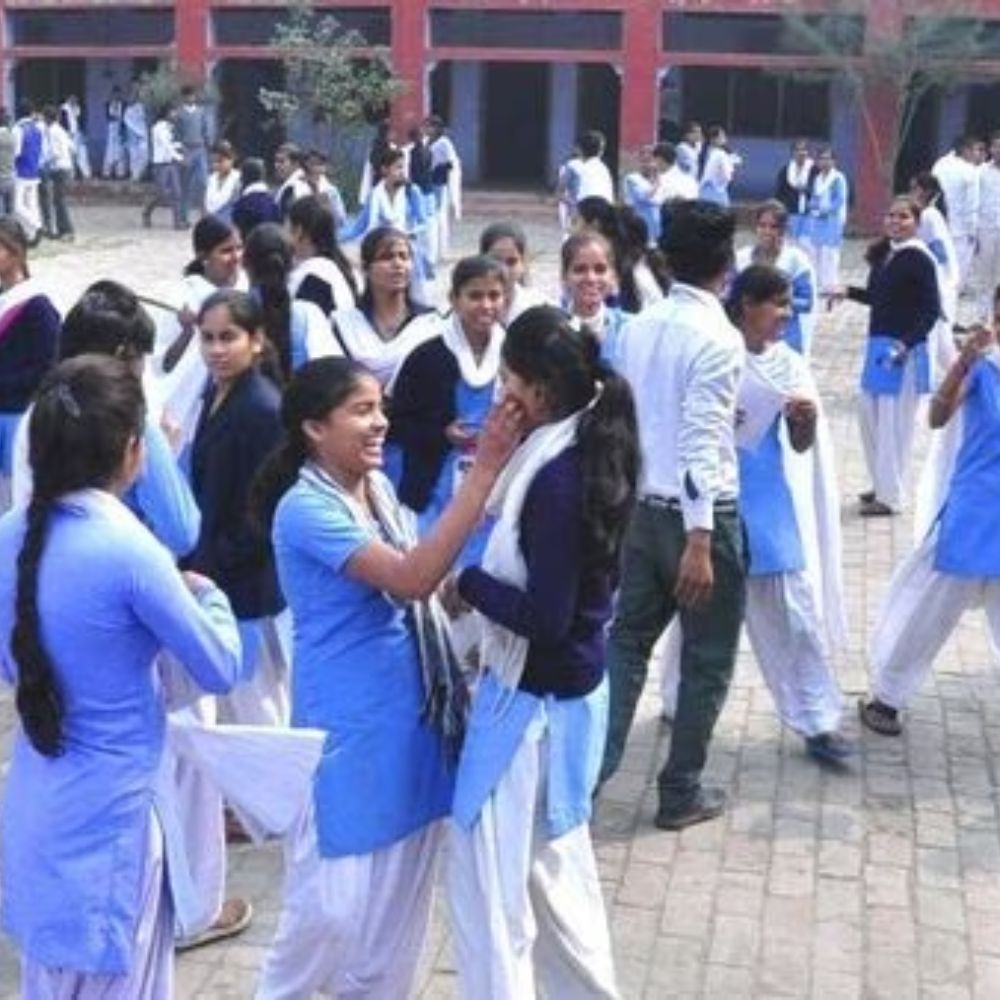Success is a seven letter word but has so many stories inside it. Everyday we wake up in the morning, drink our tea or coffee, get ready and head out to work. Sometimes we have our work right at our homes in front of our favorite window and being in between our families. We hustle through the day and try to validate our hard labor to the duties we are being held accountable for. After coming back home or in the case where we are working from home, finishing our work for the day get back to household chores and spend time with our loved ones.
Can you sense a never ending loop? No! I am not saying it is bad. Not everyday is bad or everyday is good. We are the characters from our mixed emotions. We all have 24 hours to work, eat, sleep and repeat. But all I am saying is that in between this facade of time and money, do not forget to dream. Do not give up on your little definitions of happiness. It can be tasting a new flavor of ice cream or gifting a new feature loaded smartphone to your parents or maybe cleaning that corner in your room and make it aesthetically gorgeous.
Trust me! you will feel positive vibes after accomplishing your tiny cute to-do lists. Now! You might be wondering why Business Outreach Magazine is talking all emotional. We can be proud to say that there are individuals who consider little things to matter in their lives. They too lied down on their bed before drenching into an ocean of thoughts and dreamt about turning their lives to be purposeful. These are entrepreneurs who dreamt big and worked really hard to be where they are now. A place where the value of time and gratitude is important, a place where humility thrives to be the evergreen emperor and a place where money is something more invaluable than just a net worth. Business Outreach Magazine will walk you through the success stories of about 10 Indian entrepreneurs who inspire us and motivate us to be the best version of ourselves and always keep in mind to never stop dreaming and working towards that dream for a life of financial freedom and mental peace. Although the top 10 Indian entrepreneurs list is not limited to these great personalities, it is a blueprint of stories we all should learn from.
TOP 10 Indian Great Personalities
1. Jehangir Ratanji Dadabhoy Tata

Jehangir Ratanji Dadabhoy Tata was born in Paris, France on 29th July, 1904. His father was Ratanji Dadabhoy Tata who was a respected businessman back then under the Tata family of India. His mother Suzanne Briere was a French citizen and also the first woman in India to drive a car. In 1929, Jehangir Ratanji Dadabhoy Tata became the first person to hold a pilot’s license in India. J.R.D. Tata is the mastermind of several industries under the portfolio of Tata Group of Companies like Tata Salt, Titan Enterprises, Voltas, Tata Consultancy Services, Air India and Tata Motors. J.R.D. Tata was also awarded the French Legion of Honor in 1983. For his contributions to the development of the Indian industry, J.R.D. Tata was awarded ‘Padma Vibhushan’ and ‘Bharat Ratna’, which are the two highest awards for civilians.
J.R.D.Tata spent his childhood days in France and French was his first language. He attended Janson De Sailly School in Paris. In India, he attended Cathedral and John Connon School in Bombay. Tata received education from India, France, Japan and London. After J.R.D’s father got associated with the Tata company, they moved their family to London, where J.R.D. was sent to a grammar school in England for further studies. Back in the day, times were different and J.R.D. Tata, being French, had to get enlisted in the army for a year. In between studies and his time in the army, his skills of knowing English and French along with his typing knowledge made him the secretary in the colonel’s office. After he served in the army, he was brought back to India by his father and he joined the Tata group. Tata was hugely drawn towards aviation and flying planes and got licensed in February, 1929. His passion towards flying planes made him the ‘Father of Indian Civil Aviation’. In 1932, Tata founded the first commercial airlines in India, known as the Tata Airlines, which is now popularly known as ‘Air India’. He and his friend Nevill Vintcent both worked in building and shaping Tata Airlines. J.R.D also was granted a commercial pilot license in 1929. In 1953, the government of Jawaharlal Nehru nationalized Air India, which J.R.D. fought against and was completely against the initiative.
After joining Tata Sons in 1925, he was an apprentice without pay. At the age of 34, J.R.D. got elected as the Chairman of Tata Sons which was the largest industrial enterprise in India. He took Tata Group to impeccable heights with his knowledge, ethics and strategies and refused to resort to unfair practices like bribing politicians or associating with black market. His vision pulled Tata Group from a net worth of $ 100 million to $ 5 billion with expertise in industries like steel, engineering, chemical and many more. J.R.D. was also in Sir Dorabji Tata Trust as a trustee and with his guidance the Trust founded the first cancer treatment and research center in Asia in 1941, the Tata Memorial Center for Cancer, Research and Treatment in Bombay. Tata also laid the foundation for the Tata Institute of Social Sciences (TISS) in 1936, the Tata Institute of Fundamental Research (TIFR) in 1945 and the National Center for Performing Arts. He founded Tata Motors in 1945 and in 1948, he launched Air India’s and India’s first international airline. In 1953, J.R.D. Tata was appointed the Chairman of Air India and was also made the Director on the Indian Airlines’ Board, which he held for about 25 years. For his selfless contributions to the aviation industry of India, he was honored as the Honorary Air Commodore of India.
J.R.D. Tata received a number of awards like the Tony Jannus Award in 1979, Gold Air Medal of the Federation Aeronautique Internationale in 1985, the Daniel Guggenheim Medal in 1988 and many more. Tata truly believed in the welfare of his employees and introduced schemes to safeguard their interests in the company which included, employee provident scheme, accident compensation and free medical benefits. This later became a statutory mandate in India. On 29th November, 1993, at the age of 89, J.R.D died of a kidney infection leaving behind an ocean full of contributions and humility.
2. Dhirubhai Ambani
Dhirajlal Hirachand Ambani, popularly known as Dhirubhai Ambani was born on 28th December, 1932 was a business tycoon from India who founded Reliance Industries. In 1977, Ambani made Reliance public and made a net worth of about $ 2.9 billion in 2002, when he died. Dhirubhai Ambani received the Padma Vibhushan award posthumously in 2016, for his countless contributions to the Indian industry and its developments. Dhirubhai Ambani was the son of his father Hirachand Gordhanbhai Ambani, who was a school teacher in Modh Baniya community and his mother Jamnaben Ambani from Chorwad district in Gujarat. Ambani started ‘Majin’ in partnership with Champaklal Damani. Majin’s business was with Yemen, where it imported polyester and exported Indian spices there. The first office of Reliance Corporation was in Narsinatha Street which was located near Masjid Bunder. The office was a 330 sq ft space with a telephone, a single table and three chairs. During the early days of Reliance Corporation there were three assistants to help them with the daily proceedings. The team which Ambani made to stay for years consisted of Rasikbhai Meswani (Ambani’s nephew), Ramnikbhai, Nathubhai (younger brother), and his former school friends named Rathubhai Mucchala and Narottambhai Joshi. At this time Ambani along with his family resided in a two-bedroom space at Bhuleshwar which is at the Jai Hind Estate in Mumbai. Dhirubhai Ambani and Champaklal Damani ended their collaboration in 1965 due to differences in agreements regarding the order of business. It was believed that Damani, being a conservative trader, did not support building inventories for yarn. But Ambani was more aggressive in his approach and parted ways with Damani to build Reliance Commercial Corporation in 1966 which became Reliance Industries on May 8, 1973. Ambani during this period launched ‘Vimal’ which provided polyester for sarees, shawls and dresses.
Reliance Industries indulged in extensive marketing which made it a popular brand in every Indian household. Retail outlets as franchises were opened across the country which exclusively sold only ‘Vimal’ products. Around 1975, officials from the World Bank visited the textile manufacturing unit of Reliance Industries. In 1988, Reliance Industries encountered an issue with rights. The rumor was the company was working in a way so that not an inch changes in their stock prices. This created an opportunity for Bear Cartel, a stock brokers group from Calcutta, in short selling Reliance’s shares. To tackle this situation, a stock brokers group recently termed as ‘Friends of Reliance’ from the Bombay Stock Exchange started to buy those short shares which were sold by Bear Cartel.
The Bear Cartel was under the impression that the Bulls would run out of cash before completing the transaction and there would be a settlement agreement under the ‘Badla’ system policy made by the Bombay Stock Exchange. The Bulls continued to buy shares at the price of Rs. 152 per share till the last day of settlement. But then the Bulls demanded a physical shares to be delivered to them. This was a tough situation for the Bear Cartel which made the Bulls ask for ‘Unbadla’ which was a penalty of Rs. 35 for each share. This created havoc and the price of the share jumped to Rs. 180 for each share. Given this situation, the Bombay Stock Exchange intervened into the matter and re-negotiated to drop the ‘Unbadla’ rate to Rs. 2 per share. It was rumored that Dhirubhai Ambani himself provided those shares to the Bear Cartel and received a huge profit out of this entire incident.
After this incident, a lot of questions were raised by the press and authorities about how a yard trader could manage to have such a huge corpus of capital in such a crisis period. Pranab Mukherjee, who was the then Finance Minister of India answered to this question that an NRI with a common surname ‘Shah’ from Isle of Man invested about $ 220 million in Reliance Industries in between 1982 to 1983. Such offshore capital reached Indian territories via companies like Crocodile, Lota and Fiasco. The efficacy of the transactions were investigated by the Reserve Bank of India, where they stated that no unethical or illegal practices were involved in this scenario.
Dhirubhai Ambani died of a major stroke in July, 2002. This was Ambani’s second stroke with the first one happening in 1986. After his first stroke, Ambani made his sons Mukesh and Anil take control over the company. After Dhirubhai Ambani’s demise, the company was split into ‘Reliance Industries Limited’ directed by Mukesh Ambani and ‘Reliance Anil Dhirubhai Ambani Group’ led by Anil Ambani. In 2012, Reliance Industries was one of the top two companies from India to enlist in the ‘Fortune 500’ companies list. From records in 2017, the company has about 250,000 employees. The Hindi movie, ‘Guru’ is said to be inspired from the life and success story of Dhirubhai Ambani which was directed by eminent filmmaker Mani Ratnam and cinematographed by Ravi Menon with music composed by A.R.Rahman. The movie described the struggles of a regular Indian man trying to create his legacy in the Indian business with a company called the ‘Shakti Industries’.
3. Nagavara RamaRao Narayana Murthy

Nagavara RamaRao Narayana Murthy was born on 20th August, 1946 in Sidlaghatta, Karnataka. He is the founder of Infosys’ where he held the position as chairman, chief executive officer, mentor and also the president. His current net worth is estimated around $ 4.4 billion. N.R. Narayana Murthy graduated with a bachelor’s degree in electrical engineering from National Institute of Engineering, University of Mysore and a master’s degree from Indian Institute of Technology, Kanpur. Murthy started his career working for the Indian Institute of Management, Ahmedabad as the chief of systems programming where he was on a project that was developing India’s first computer system that deals with time-sharing and at Patni Computer Systems based in Pune, Maharashtra. He laid the foundation of Infosys in 1981 where he was the CEO till 2002 and then became the chairman which he was till 2011. He became chairman emeritus after stepping down as chairman in 2011. Murthy was again appointed as executive chairman in June, 2013 for a span of five years. Fortune Magazine has listed Murthy among the top 12 Indian entrepreneurs. Murthy for lifelong contribution to the Indian IT industry has bestowed him the title ‘Father of Indian IT Sector’. N.R. Narayana Murthy has received Padma Vibhushan and Padma Shri award. Murthy is also the father-in-law of Rishi Sunak, who is a member of the British Parliament and the Chancellor of Exchequer. At IIM, Ahmedabad, Murthy designed and developed an interpreter for the Electronics Corporation of India Limited.
Murthy along with six other computer software experts founded Infosys in 1981 with a capital of Rs. 10,000 which he received from his wife Sudha Murthy. At Infosys, Murthy was the mastermind behind developing the Global Model for Delivery for services based in the IT sector that are outsourced from India. He served as the chairman between 2002 to 2006 which was followed by being a Chief Mentor. N.R. Narayana Murthy is also a director of HSBC, DBS Bank, ICICI, Unilever and NDTV who works independently. His sheer genius and ocean of knowledge and experience has made him an advisory board member of several educational institutions like INSEAD, Ford Foundation, UN Foundation, and many more. Murthy is also the chairman of the board of the Public Health Foundation of India. He also serves a position on the advisory board of the Asia Pacific division of British Telecommunications. Murthy is also holding a strategic position at Cyril Amarchand Mangaldas, which is a national law firm. He also holds a membership at IESE’s International Advisory Board (IAB). Back in 2016, Murthy shared insights from his own personal experience about how to be better at managing your team. Sudha Murthy, wife of N.R. Narayana Murthy is a business woman, an educator and an author. She also held the position of chairperson in Infosys Foundation. N.R. Narayana Murthy and Sudha Murthy have a son named Rohan Murthy and a daughter named Akshata Murthy.
4. Shiv Nadar

Shiv Nadar is an Indian billionaire business personality born on 14th July, 1945 in Moolaipozhi village, Tamil Nadu. He is the founder of HCL technologies and Shiv Nadar Foundation. Shiv Nadar founded HCL during the middle of 1970 where he evolved the IT focused hardware company into an enterprise driven towards IT. He constantly experimented and reinvented his methods to make the company better over the last three decades. Nadar was also honored with Padma Bhushan in 2008 for his passion and dedication towards the Indian IT sector. Shiv Nadar was also popularly called ‘Magus’ by his friends which is an Old Persian word for ‘wizard’. He has a great contribution in shaping education standards by creating Shiv Nadar Foundation which ensures imparting quality education. He is listed on the Forbes list as the 3rd richest personality in India and the 40th in the world. His estimated net worth is about $ 29.1 billion.
Shiv Nadar is the son of Sivasubramaniya Nadar and Vamasundari Devi. His mother Vamasundari Devi’s brother is S.P. Adithanar, who founded the newspaper, DinaThanthi. Nadar studied in schools like Town Higher Secondary School which is in Kumbakonam and Elango Corporation Higher Secondary school in Madurai. He completed his higher secondary education from St. Joseph Boys Higher Secondary School, Trichy. Shiv Nadar got himself a pre-university degree from the American College in Madurai and got a degree in Electrical and Electronics Engineering degree from PSG College of Technology in Coimbatore.
Nadar started his career working for Walchand’s Cooper Engineering Company in 1967. He soon left the job and started his venture partnering with friends and colleagues. They were Ajay Chowdhry, who is an ex-chairman of HCL, Arjun Malhotra, who is the CEO and chairman of Headstrong, Subhash Arora, Yogesh Vaidya, S. Raman, Mahendra Pratap and DS Puri. Nadar’s first initiative was called Microcomp which sold teledigital calculators. He then founded HCL with a capital of Rs. 187,000 in around 1976. In 1980, HCL reached offshore regions when the company inaugurated Far East Computers in Singapore which sold IT hardware. The initiative gained enough growth which was about Rs 1 million in sales in the first year. In July, 2020, Shiv Nadar handed over the company to his daughter, Roshni Nadar. Roshni Nadar is the first woman to chair a listed Indian IT group. Nadar also resigned as managing director of the company, and he was succeeded by C. Vijay Kumar for a span of five years to be the tech CEO of HCL. In 1996, Shiv Nadar also founded SSN Engineering College in Chennai in the name of his father. Nadar was very active in the activities of the college and also gifted Rs 1 million of HCL shares to the college. In 2006, Nadar promoted further research capabilities of the college with tie-ups with foreign universities. In 2005, he joined the Indian School of Business as the executive board member. In March, 2008, Shiv Nadar collaborated with his SSN Trust and built two Vidyagyan schools in Uttar Pradesh to provide free scholarships for about 200 rural students. He went to Town Higher Secondary School and donated computers and several equipment worth Rs 80 lakhs. The board of governors of IIT Kharagpur had him as chairman until 2014.
5. Ghanshyam Das Birla

Ghanshyam Das Birla was born at a town called Pilani which was located in the district Jhunjhunu. G.D. Birla belonged to the Maheshwari Marwari group as a beloved member. Raja Baldeo Das Birla was his father. Baldevdas visited Bombay around 1884 A.D to start his own business and look for opportunities. He established Shiv Narain Baldeo Das at around 1884 in Bombay and Baldeo Das Jugal Kishore in Calcutta at around 1897. These two firms dealt with commodities like cotton, wheat, silver and many more. Baldeo Das had four sons namely, Jugal, Rameshwar, Ghanshyam and Braj, out of which Ghanshyam turned out to be the most successful. G.D. Birla became the leader in the family business which was taken to great expansion with his vision. No wonder G.D Birla’s name shines bright as one of the most famous Indian entrepreneurs. He transformed the money lending division of the business into manufacturing. His venture started in Calcutta and reached the Bengal Presidency, the region producing the largest jute. He started as a jute broker and eventually formed the Birla Jute Mills. That time the British government favored the existing European providers of jute over the Bengali merchants. G.D. Birla found it extremely taxing to run the business at that time due to the oppression of the British and Scottish authorities. His business was regularly intruded by the monopolistic mindset of the British government. World War 1 helped Birla’s business reach the moon when there were several roadblocks witnessed in the supply chain management in the British empire. In 1919, Rs. 5 million was invested to form Birla Brothers Limited when a factory was also set up in Gwalior. The Central Legislative Assembly of British India elected G.D. Birla in 1926. In 1932, Harijan Sevak Sangh, made its founding president, G.D. Birla in Delhi. During the 1940s, G.D. Birla founded Hindustan Motors. After India received her independence, G.D> Birla started business in tea and textile after acquiring former European companies. His portfolio of businesses also expanded towards steel tubes, chemical and cement. It was the idea of Ghanshyam Das Birla to form a national commercial bank which will have Indian capital and will be managed by Indians. Thus, United Commercial Bank Limited was structured and is presently known as UCO Bank. UCO Bank is the oldest and most prominent commercial bank in the country, established in 1943 in Calcutta. G.D Birla also founded several educational institutions like Birla Institute of Technology and Science and Technological Institute of Textile and Sciences in Pilani and Bhiwani, respectively. The quality of education imparted in these top engineering colleges has further helped the Birla group to establish Birla Public School. The town of Pilani is proud to be a part of Birla’s success and legacy and his contributions to the country still drives the locals with motivation. B.K. Birla, the son of G.D. Birla, founded G.D. Birla Memorial School in honor of his father. This school holds the position as one of the best schools in a residential campus in the country. In collaboration with Kalyan Citizens’ Education Society (KCES), the Birla School, Kalyan was also formed by B.K. Birla. G.D. Birla was honored with the Padma Vibhushan in 1957. G.D. Birla died at the age of 89 in London in June, 1983.
6. Dilip Shanghvi

Dilip Shanghvi is another billionaire from the top 10 Indian entrepreneurs success stories who founded Sun Pharmaceuticals. He was born on 1st October, 1955 in Gujarat, India. Dilip belongs to a Jain family from a small town called Amreli. Dilip with his father, Shantilal Sanghvi and mother, Kumud Sanghvi, lived in the Burrabazar region in Kolkata. Dilip Sanghvi did his schooling from J.J. Ajmera High School and his graduation from Bhawanipur Education Society. He studied Bachelor of Commerce from the University of Calcutta. Dilip Sanghvi started his career by helping his father in his business, which was a medicine dealership at wholesale rate. The business predominantly dealt with generic drugs. His experience and time at his father’s business made him decide to start his own medicine manufacturing unit. A 27-year old boy in 1982 with just a mere capital of Rs. 10,000. Dilip gave the name of this company as Sun Pharmaceuticals. The factory was made at Vapi, in the state of Gujarat. This factory was just a drive away from Mumbai and it concentrated on making a singular psychiatric drug. The company soon gained popularity and success and with Dilip’s energy and expertise, Sun Pharmaceuticals acquired Caraco Pharma, which was an American pharma brand in 1997.
In 2007, Sun Pharmaceuticals also acquired Taro Pharma, which was based in Israel. In 2012, Dilip Sanghvi delivered the company’s CEO chair to Israel Makov, who was a former CEO from the company, Tera Pharmaceuticals. Sun, Ranbaxy and Daiichi Sankyo agreed that Ranbaxy’s outstanding shares will be bought by Sun Pharmaceuticals for $ 3.2 billion provided Sun pays off Ranbaxy’s $ 800 million debt. The deal successfully closed in March, 2015, and made Sun Pharmaceuticals, the largest manufacturer of drugs in India and the fifth largest manufacturer, globally. The Indian Government appointed Dilip Sanghvi in the central board group of Reserve Bank of India in January, 2018. The committee comprises 21 members where Dilip is one of them. Sanghvi is also the chairman of IIT Bombay’s governing board. In 2017, Dilip Sanghvi was also appointed as a trustee at the University of Oxford in the Rhodes scholarship initiative. In 2019, ‘The Reluctant Billionaire’ authored by Soma Das describes the life of Dilip Sanghvi. This book also got nominated for the Tata Literature Award in the category for the Best Business book. This is surely a story to get inspiration.
7. Ardeshir Godrej

Ardeshir Burjorji Sorabji Godrej was an Indian business tycoon who co-founded Godrej Brothers Company with his brother Pirojsha Burjorji. This company is presently known as Godrej Group. Ardeshir Burjorji Sorabji Godrej was born in 1868 to father Burjorji and mother Dosibai Gootherajee. The Gootherajee family was wealthy and belonged to the Parsi-Zoroastrian community of Bombay or now Mumbai. Ardeshir’s father and grandfather were into the real estate business. Ardeshir’s father and the entire family changed their name into Godrej around January, 1871. Ardeshir started his career in 1894, when he was a fresh law graduate who fought his first case for a well-known firm in Zanzibar. There is no factual information regarding the case that Ardeshir fought. But a report from Ardeshir’s biography states that the case proceeded well until at the end, Ardeshir’s client had no solid evidence about visiting a particular case, and Ardeshit’s ethical sense forbade him from making a case based on assumptions. Eventually, the firm’s client replaced Ardeshir with some other lawyer. Ardeshir returned to Bombay, where he worked as a chemist’s assistant. In 1895, Ardeshir went to seek a loan from Merwanji Muncherji Cama, who was Ardeshir’s father’s friend. Ardeshir’s prime business model was to manufacture surgical equipment. Cama was curious to know the purpose of Ardeshir asking for a loan from him rather than his father. Ardeshir made it clear that he will not accept money as a gift. This became more evident when his father died in 1918, Ardeshir denied his father’s inheritance.
Ardeshir started manufacturing scissors, scalpel, forceps and many other surgical equipment with the help of a loan of $ 1500 from Cama in 1895. Ardeshir met his proprietor back then who congratulated Ardeshir for his efforts and hard work. But there was a disagreement between the two parties. Ardeshir wanted the supplies to be branded ‘Made in India’. But the proprietor considered this step as bad marketing. At the end, this partnership did not see the light of the day. One morning, Ardeshir saw in the newspaper that burglary was in the rise. Even the police commissioner demanded better security at the areas of businesses. Ardeshir noticed that a good reliable lock was in demand. He went to Cama asking for another loan. Ardeshir regretted that was unable to pay the previous loan to Cama, but assured that he will become the best lock-manufacturer and maker in the country. Cama gladly invested in Ardeshir’s venture and the journey to become the best lock-maker began in a small shed beside Bombay Gas work with a dozen workers who were skilled and experienced. Ardeshir started manufacturing locks with the brand named ‘Anchor’, which he guaranteed the lock to be unpickable. After a few years, Ardeshir patented his first invention which was called ‘Gordian Lock’. Later he also started manufacturing inexpensive locks which came with a note that it does not guarantee proper safety like other proper and better made locks.
Ardeshir stated that a four lever lock made with proper material and expertise is always better that an inefficient and poorly made eight-lever lock. Ardeshir later moved forward in building a lock influenced by Jeremiah Chubb’s masterpiece in 1818, called the ‘Detector Lock’, which had a feature back then in notifying attempts to the owner that an improper key was being used to unlock the device. Getting inspired from the patent of Charles Chubb, Ardeshir made locks which did not require a ‘regulator’. Ardeshir said in a small booklet which was distributed and published by him that locks from Godrej were made in modern machines and with the help of expert professionals who had an experience of about 15 years in the industry. In 1901, Ardeshir also experimented on safes where he ensured that safes should be burglarproof and also fireproof, which was not the case for most safes back then. After several discussions with engineers , craftsmens and experts, it was identified that in order to build a solid safe, a single steel sheet should be used. In 1908, Ardeshir and his co-founder Pirojsha applied for a British patent to build springless locks. They were granted the patent in 1909. Ardeshir started touring France, England and Germany to study lock-making from his competitors back in 1910. He also visited the Chubb factory in England, where he took notes and recovered any shortcomings of the locks that Ardeshir was manufacturing in India. When Ardeshir returned back to India from his insightful trip, Pirojsha had already expanded the company with about 600 employees.
Ardeshir in a publication demonstrated his locks to be fireproof and reliable. This result was seen in the Calcutta Dharmatala fire in 1925, when Godrej locks proved their reliability. Furthermore, in 1944, when Ardeshir had died eight years earlier, Godrej locks again proved their worth during the ammunition explosion that took place in Bombay docks.
Ardeshir also took a huge part during the time of Indian independence when he encouraged people to accept locally made products for improving the Indian economy. He also stressed that India is vastly capable of manufacturing good quality products and built a local industry around it which is as sustainable and lucrative as the international products. Ardeshir was certain that if the country is provided with products of competitive quality, they will surely chose indegenious products over foreign ones.
This is how Ardeshir Godrej built his legacy with nothing but motivation, hard work and honesty.
8. Gautam Adani

Gautam Shantilal Adani is a philanthropist and an Indian billionaire who founded the Adani Group. Gautam Shantilal Adani was born on 24th June, 1962, in a Gujarati family in Ahmedabad. His father Shantilal and mother Shanti Adani had migrated to Gujarat from a town called Tharad. Gautam Adani received his schooling from Sheth Chimanlal Nagindas Vidyalaya in Ahmedabad. Gautam also went for a bachelors in commerce degree from Gujarat University, but dropped out from second year. In 1978, Gautam went to Bombay where he worked for Mahendra Brothers as a diamond sorter. In 1981, Gauatam’s elder brother , Mahasukhbhai Adani acquired a plastics unit based in Ahmedabad. Here, Gautam was asked by his elder brother to manage the operations. This gave Gautam a pathway to start global trading, where he imported polyvinyl chloride (PVC). In 1985, primary polymers were imported by Gautam for micro industries. He also founded Adani Exports in 1988. Now it is popularly known as Adani Enterprise, which is a holding company for the Adani Group. The economic policies that were introduced in 1991, helped Gautam Adani expand his business and he started trading metal, agricultural products and textiles. In 1994, Government of Gujarat outsourced Mundra Port and in 1994, Adani Group was successful in getting the contract. Presently, Mundra Port is the largest privately held port in India. It has the capacity to handle cargo strength of about 210 million tonnes every year. In 1996, Adani Group with the vision of Gautam Adani started moving into the thermal power sector, where Adani Power has a 4620MW capable thermal plant. Adani Power is the company producing the largest amount of thermal power in the country. In the year 2006, Adani Group went into the business of generating power and in May, 2020, Adani won the largest solar bidding war from the Solar Energy Corporation of India (SECI), which was about $ 6 billion. In September, 2020, a 74% stake of the Mumbai International Airport was acquired by Adani Group. In the year 2022 in the month of February, Gautam Adam also surpassed Mukesh Ambani in becoming Asia’s richest personality. Gautam Adani presides as the president of Adani Group which was established in 1996. His generosity preceded him for his selfless contribution of about Rs. 100 crores in the PM’s Cares Funds to fight the coronavirus pandemic.
9. Azim Premji

Azim Premji was born on 24th July, 1945 in Bombay. He was born to a renowned family where Azim Premji’s father was known as the ‘Rice King of Burma’. His father was also invited by Muhammad Ali Jinnah, to settle in Pakistan. But the offer was refused by Azim Premji’s father. Azim Premji has graduated from Stanford University with a bachelor’s degree in Electrical Engineering. Azim Premji contributed forty years of his life to the welfare and development of Wipro Limited, where he held the position as Chairman of the company. His informal name ‘Czar of the Indian IT Industry’ rightfully screams ethics and aspirations for the younger generations. In 2010, AsiaWeek voted Azim Premji to be one of the most powerful personalities in the world. In 2004 and 2011, Times Magazine nominated Azim Premji as one of the 100 most influential individuals globally. He serves the position of chancellor in the Azim Premji University, which is located in Bengaluru. According to Bloomberg, Azim Premji’s net worth is around $ 32.8 billion. He pledged to donate about half of his wealth for the well-being of the nation. In 1966, Azim Premji who was just 21 years at that time after his father’s death returned from Stanford to take charge in Wipro. The company was known as Western Indian Vegetable Products which did business in hydrogenated oils.
Later, Azim went on manufacturing bakery fats, baby toiletries, soaps, hydraulic cylinders and many other items. Wipro was founded with the IT sector starting to gain some traction in the country. The company made microcomputers in collaboration with the American company, Sentinel Computer Corporation. In 2005, Azim Premji was honored with the Padma Bhushan Award by the Government of India for his impeccable contribution to the Indian economy. In 2011, Azim Premji was awarded with the Padma Vibhushan, which is the second highest award in India for civilians. Forbes also named Azim Premji as the most generous philanthropist in 2019 outside the United States of America. In 2011, Azim Premji also established the Azim Premji Foundation, a non-profit group which is dedicated to the welfare of humanity. Azim Premji kept his word when signing for ‘The Giving Pledge’ where he donated most of his wealth for the world. This initiative is heart-touching and gives us the lesson of sharing and living together for a better world.
10. Ratan Tata

The Top 10 Indian Entrepreneurs list is incomplete without Ratan Tata, who served his entire life building wealth for the society. Ratan Tata is a philanthropist, businessman and a humanitarian who believed in a vision to take Tata Sons to great heights and achievements. Ratan Tata was born on 28th December in 1937. Ratan Tata was honored with Padma Bhushan in 2000 and Padma Vibhushan in 2008. Ratan Tata’s father Naval Tata was adopted by Ratanji Tata, who was the son of Jamsetji Tata. Jamsetji Tata built the Tata Group. Ratan Tata studied in Cornell University College of Architecture and Harvard Business School in 1975. In 1961, Ratan Tata joined the Tata Sons where he worked on Tata Steel’s shop floor. He succeeded J.R.D. Tata, and acquired companies like Jaguar Land Rover, Tetley and Corus. This made Tata Group a global brand with an enormous spectrum of varied business sectors. On succeeding J.R.D. Tata, Ratan Tata faced several backlashes from renowned and influential company heads who spent decades in the company. Ratan Tata tactfully handled every obstacle by fixing a retirement age and made a policy with the several companies to contribute a portion of their profit to build the Tata Group. His compassion towards younger talent was commendable and he encouraged them to bring fresh ideas to the table. His 21 years of service to the company grew the company’s profit by 50 times and revenues by 40 times.
Tata invested personally in start-ups like Snapdeal, Cashkaro, Ola Cabs and Teabox. Ratan Tata also acquired a stake in Chinese smartphone maker, Xiaomi. With Ratan Tata leading the way for Tata Motors, the company immensely promoted selling electric vehicles for greener mobility. Ratan Tata is also a supporter of education, healthcare and the development of rural areas. Tata Hall was inaugurated in 2018 in the University of California, which in San Diego facilitates biological and physical sciences research and is the center for the Tata Institute for Genetics and Society. Tata Education and Development Trust provided a scholarship trust of about $ 28 million to Cornell University which will allow funding aid for undergraduates from India. Tata Consultancy Services is the company which donated the most amount of money to Carnegie Mellon University (CMU) which will provide research abilities in cognitive and autonomous systems. Under the supervision of Ratan Tata, the MIT Tata Center of Technology and Design was founded in the Massachusetts Institute of Technology. In 2021, Ratan Tata received the highest award for civilians in Assam, the ‘Assam Baibhav’ for his contribution to cancer cure facilities in the region.
Aren’t we feeling rejuvenated? A sense of aura passing through our veins telling us to get up and work for our dreams. Telling us to laugh, cry, be grief-stricken and feel every possible emotion and enjoy the beauty of life. This is what we should take away from the stories of such famous Indian entrepreneurs, who overcame every obstacle and are at a place they are. They are the brightest armor of strength, resilience and humility. Something which we all should admire and respect and apply to our own dreams and goals.
Also, Read More-
Top Indian Startups Led By Women
Instagram has paused Tiktok-like features after users complained






